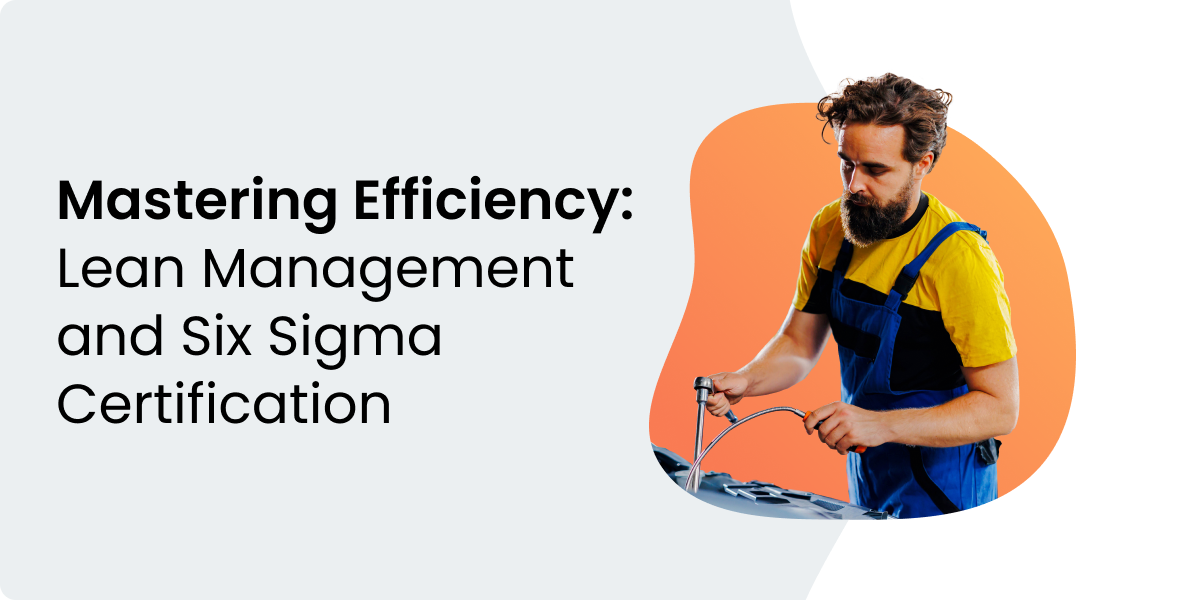A Brief History of Lean Management
Lean principles date back to the early 20th century, but they became widely recognized through Toyota’s Production System (TPS) in the 1950s. Toyota revolutionized manufacturing by focusing on eliminating waste, optimizing workflows, and continuously improving processes—a system that later inspired businesses worldwide.
Though Lean originated in manufacturing, its principles are now applied across industries, including healthcare, finance, retail, and technology. Any organization that values efficiency and customer satisfaction can benefit from Lean Management.
What Are Lean Management and Six Sigma?
Businesses thrive on efficiency. Lean Management and Six Sigma are two methodologies designed to streamline processes, reduce waste, and improve overall quality.
- Lean Management focuses on eliminating inefficiencies by optimizing workflows, cutting waste, and maximizing value to customers.
- Six Sigma is a data-driven methodology aimed at minimizing defects and ensuring processes meet the highest quality standards.
Together, these frameworks empower organizations to work smarter, not harder, leading to better productivity, cost savings, and customer satisfaction.
Why Are They Important?
In today’s competitive landscape, organizations must do more with less—without sacrificing quality. Lean and Six Sigma principles help businesses:
✅ Reduce waste and unnecessary costs
✅ Improve product and service quality
✅ Boost customer satisfaction and retention
✅ Enhance team collaboration and productivity
Whether you’re in manufacturing, healthcare, finance, or even software development, these skills will set you apart in the job market and drive meaningful improvements in your organization.
How Six Sigma Belts Are Accredited by the Chartered Quality Institute (CQI)
Six Sigma certifications follow a structured belt system, similar to martial arts, indicating different levels of expertise:
⚪️ White Belt – Fundamentals of process improvement and Six Sigma principles
🟡 Yellow Belt – Build on the basics of process improvement, DMAIC, and statistical tools and apply your knowledge to real-world projects
🟢 Green Belt – Ability to lead small projects and improve processes
⚫️ Black Belt – Expert-level skills in leading complex projects and driving operational excellence

To ensure quality and credibility, these Six Sigma certifications are accredited by the Chartered Quality Institute (CQI)—a globally recognized body dedicated to quality management. CQI accreditation ensures that certified professionals meet rigorous industry standards, making their credentials highly valuable worldwide.
🔗 Learn more about CQI accreditation here: Chartered Quality Institute
How to Get Six Sigma Certified on OpenSesame
Investing in Six Sigma certification doesn’t just enhance your skills—it delivers measurable ROI by reducing operational inefficiencies, cutting costs, and improving overall business performance.
With OpenSesame’s curated Six Sigma and Lean Management courses, you can earn your certification directly within the course—saving time and money compared to traditional training programs.
🔗 Explore the full course list here
These courses allow you to:
✔️ Earn an industry-recognized Six Sigma certification without additional fees
✔️ Save money by accessing certification within the course—no need for expensive external exams
✔️ Learn from industry experts with real-world experience
✔️ Study at your own pace to fit training into your schedule
Whether you’re looking to advance your career or improve your company’s bottom line, Six Sigma certification is a smart investment in efficiency, quality, and long-term cost savings.
Start Your Journey Today
Efficiency isn’t just a buzzword—it’s a competitive advantage. Whether you’re looking to upskill yourself or your team, Lean Management and Six Sigma training provide the tools to drive meaningful change.
Check out OpenSesame’s Six Sigma and Lean Management courses and take the first step toward certification.
